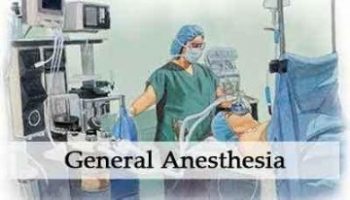- Home
- Editorial
- News
- Practice Guidelines
- Anesthesiology Guidelines
- Cancer Guidelines
- Cardiac Sciences Guidelines
- Critical Care Guidelines
- Dentistry Guidelines
- Dermatology Guidelines
- Diabetes and Endo Guidelines
- Diagnostics Guidelines
- ENT Guidelines
- Featured Practice Guidelines
- Gastroenterology Guidelines
- Geriatrics Guidelines
- Medicine Guidelines
- Nephrology Guidelines
- Neurosciences Guidelines
- Obs and Gynae Guidelines
- Ophthalmology Guidelines
- Orthopaedics Guidelines
- Paediatrics Guidelines
- Psychiatry Guidelines
- Pulmonology Guidelines
- Radiology Guidelines
- Surgery Guidelines
- Urology Guidelines
Kids exposed to GA have poor literacy & numeracy skills

Children exposed to general anesthesia, GA are at 17 percent increased risk of poor development as compared to those unexposed to general anesthesia, according to the new finding published in Pediatric Anesthesia, based on a data-linkage study of over 210,000 children.
Professor Natasha Nassar of the University of Sydney and his associates conducted a study to compare the developmental and school results of children exposed to general anesthesia during hospital procedures (37,880) up to 48 months of age to same-aged children with no exposure to general anesthesia or hospitalization (197,301).
Key points recorded :
Compared to children unexposed to general anesthesia, those exposed to general anesthesia had a:
- 17 percent increased the risk of poor child development
- 34 percent increased the risk of lower numeracy scores on school tests
- 23 percent increased the risk of lower reading scores on school tests
The 211,978 children included in the study were born in New South Wales at 37-plus weeks' gestation without major congenital anomalies or neurodevelopmental disability. Of these, researchers had data on their school entry developmental assessment in 2009, 2012, or their Grade-3 school test results in 2008-2014
Professor Natasha Nassar said that there are many reasons why a child requires surgery or investigation, and, in some cases, this may be lifesaving or unavoidable and for these children, the findings of the study suggest that it is important to follow-up and monitor their literacy and numeracy skills when they reach school, and ensure early intervention, if required.
There are some procedures where alternative approaches or management may be possible, but the majority of surgeries in young infants and children cannot easily be postponed." said Dr. Skowno, co-author of the study.
Dr. Skowno also said that parents can certainly discuss with their doctor and explore whether these procedures can be avoided, combined with other procedures, delayed to older ages or treated with alternatives to surgery, or other methods of sedation.
The study emphasizes further investigation of the specific effects of general anesthesia on numeracy skills particularly among children exposed to the previous or long duration of general anesthesia or with repeated hospitalizations.
The study was published in the journal Pediatric Anesthesia
For more reference log on to: http://10.1111/pan.13390

Disclaimer: This site is primarily intended for healthcare professionals. Any content/information on this website does not replace the advice of medical and/or health professionals and should not be construed as medical/diagnostic advice/endorsement or prescription. Use of this site is subject to our terms of use, privacy policy, advertisement policy. © 2020 Minerva Medical Treatment Pvt Ltd